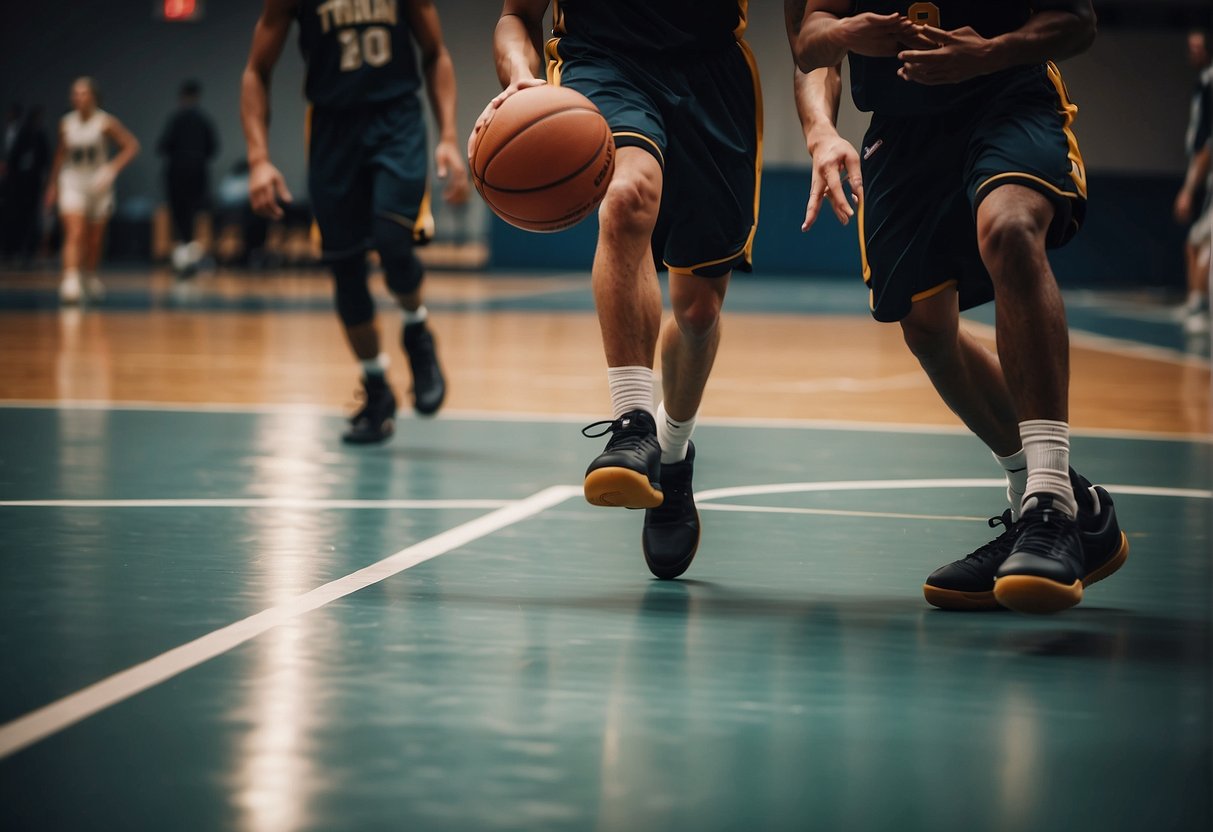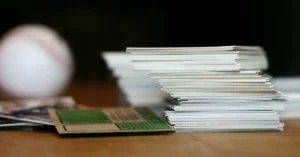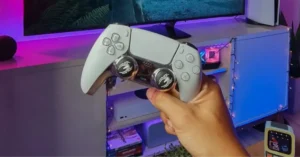Discover the journey to basketball mastery with my insights into how long it takes to get good at basketball. From dedication to practice, understand the path to achieving your hoop dreams.
How Long Does It Take to Get Good at Basketball: Basics
Learning the Rules and Positions
Rules: The framework of basketball is built on its regulations, which dictate how the game unfolds. You’ll need to become familiar with key concepts such as dribbling, which involves bouncing the ball while walking or running, and the prohibition against taking more than two steps without dribbling. Violating this rule is known as “traveling.” There’s also the shot clock, a time limit within which your team must attempt a shot.
Positions: Each player has a designated position:
- Point Guard (PG): Often the team’s main ball-handler and distributor.
- Shooting Guard (SG): Skilled at long-range shots and sometimes acts as a secondary ball handler.
- Small Forward (SF): Versatile players who can score from close and mid-range distances.
- Power Forward (PF): Strong players who play close to the basket and excel at rebounding.
- Center (C): Typically the tallest player, who plays near the basket to block shots and rebound.
The position you play will shape your role on the team and the skills you’ll prioritize.
Mastering Fundamental Basketball Skills
To start building your proficiency in basketball, you’ll want to focus on the fundamentals of the sport. This includes learning to:
- Handling the Ball: This means dribbling efficiently with both hands, passing effectively to teammates, and protecting the ball from defenders.
- Shooting: Refine your ability to score by practicing different shots, including layups, free throws, and jump shots. Your aim and consistency are crucial here.
- Defense: A critical part of the game where you work to prevent the opposition from scoring. This involves learning proper stance, anticipation, and contesting shots without fouling.
- Rebounding: On offense or defense, securing the ball after a missed shot can give your team a significant advantage.
Developing Core Skills

Improving Shooting Techniques
When aiming to improve your shooting technique, paying attention to your form is critical. A consistent shooting form leads to improved accuracy over time. Start with close-range shots and gradually increase your distance to develop a feel for shooting from various spots on the court. Incorporating shooting drills that emulate game situations can accelerate your development.
Enhancing Dribbling and Ball Handling
Effective dribbling and ball handling are pivotal for maneuvering past defenders and creating scoring opportunities. Focus on maintaining a low stance and keeping the ball close as you conduct dribbling drills to increase your hand speed and control. Alternating hands and using cones can simulate game conditions, building your confidence and ability to navigate tight in-game scenarios.
Effective Passing and Team Play
Solid team play revolves around understanding your teammates and mastering effective passing. Sharpen your passing skills by varying the types of passes—chest, bounce, and overhead passes—and practice them in motion to prepare for live gameplay. When engaged in team drills, emphasize communication, as working cohesively with your teammates is just as important as any individual skill.
Physical and Mental Fitness for Basketball

To develop proficiency in basketball, you must focus on enhancing both your physical and mental fitness. Attaining peak performance on the court requires building a foundation of strength, agility, and endurance and implementing nutrition and recovery strategies that support your training and game demands.
Building Strength, Agility, and Endurance
Strength: Your basketball performance can greatly improve by incorporating weight lifting into your workout program. Focus on squats, deadlifts, and bench presses to enhance your overall strength, crucial for both offensive and defensive play.
Agility: Basketball demands quick lateral movements and explosive starts. Therefore, agility drills should be a staple in your routine. Cone and ladder drills can significantly increase your ability to change direction swiftly and efficiently.
Endurance: To keep up with the game’s pace, endurance training is vital. Mix sprints and running into your practice sessions. Interval training, such as sprinting the length of the court followed by jogging back, can be instrumental in building your cardiovascular and muscular endurance.
Nutrition and Recovery Strategies
Nutrition: Your diet significantly impacts your performance and recovery. Focus on a balanced diet rich in proteins for muscle repair, carbohydrates for energy, and fats for overall health. Hydration is also key, so ensure you drink plenty of water throughout the day.
Recovery: Adequate rest is as vital as your training. Incorporating rest days and getting enough sleep each night allows your muscles and mind to recover. Additionally, consider stretching or yoga to improve your flexibility and decrease the risk of injury.
Advanced Basketball Techniques

Mastering Defensive and Offensive Strategies
To enhance your defense, learning how to read your opponent’s movements and anticipate their plays is essential. Employing advanced defensive tactics such as the hedge and recover can disrupt the offense’s rhythm. On offense, you need to be able to create scoring opportunities. Perfect your pick and roll execution to open up space and facilitate scoring chances for both you and your teammates.
Offense:
- Dribbling: Continue to refine your dribbling skills, incorporating complex maneuvers like the crossover and through-the-legs dribble to evade defenders.
- Shooting Drills: Integrate game-like scenarios into your shooting drills to replicate the pressure you’ll face in a game.
Defense:
- Work on quick lateral movements and stay on your feet to contest shots without fouling.
- Practice defensive slides to maintain your balance and position against the dribbler.
Perfecting Special Moves and Freestyle
Developing your arsenal of special moves can make you unpredictable. Using a fake can create just enough separation for a clear shot or an unimpeded drive to the basket.
Moves to perfect:
- Fake: A convincing head or ball fake can disrupt your defender’s stance, giving you an edge.
- Freestyle Dribbling: Enhance your dribble with creative freestyle moves to maintain control under pressure. Balance and agility are key to mastering freestyle prowess.
Training and Practice Routines

To excel in basketball, it’s crucial to establish a personalized training schedule and commit to consistent practice. These elements condition your body and enhance your technical abilities on the court.
Designing a Personalized Training Schedule
Creating a schedule tailored to your goals is the first step in your basketball training journey. Consider how much time you can realistically dedicate to practice each week. For example, adhering to a daily routine that allocates time slots for specific drills can accelerate skill acquisition. Here’s a simple template:
| Day | Focus Area | Time |
|---|---|---|
| Monday | Ball handling | 30 mins |
| Tuesday | Shooting | 45 mins |
| Wednesday | Defense | 30 mins |
| Thursday | Rest/Recovery | – |
| Friday | Scrimmaging | 1 hour |
| Saturday | Endurance | 45 mins |
| Sunday | Review | 30 mins |
A balanced schedule like this ensures you’re addressing all critical components of the game without risking burnout.
Consistent Practice and Skill Development
To see noticeable improvement, practicing your skills regularly is as important as the drills themselves. Integrating consistent practice can solidify your muscle memory and help with grasping the nuances of gameplay.
When focusing on skill development, you’ll want to emphasize:
- Shooting: Repetitive shooting from various positions.
- Dribbling: Continuous drill to improve ball handling under pressure.
- Passing: Accurate throws to teammates, considering timing and speed.
- Defense: Quick footwork and spatial awareness exercises.
Learning from Experts and Experience

When striving to improve your basketball skills, tapping into the wisdom of experts and utilizing your experiences are invaluable. Your journey to becoming a proficient basketball player can truly benefit from seeking guidance from seasoned coaches and studying the gameplay of professionals.
Seeking Advice from Experienced Coaches
Experienced coaches can offer a treasure trove of advice to help elevate your game. They’ve spent years, sometimes decades, on the court shaping the careers of countless players. From running drills that refine your fundamentals to providing personalized feedback that targets your unique areas for improvement, their insight is guided by a wealth of experience.
- Regular Check-Ins: Schedule consistent sessions for direct coaching.
- Actionable Feedback: Expect to receive practical tips that you can immediately apply to your game.
Analyzing Pro Basketball Footage
By dissecting pro basketball footage, especially from NBA matches, you gain access to a visual encyclopedia of what top-tier performance looks like. Notice the nuances in a player’s defense stance or the precision in their shooting form.
- Study Patterns: Look for standard plays and defensive setups.
- Technique Replication: Mimic the movements of professional players in your practice.
Watching these athletes in action isn’t just entertainment—it’s an educational tool that can inspire and inform your technique.
FAQ
How long does it take you to be good at basketball?
Becoming proficient at basketball varies depending on individual talent, dedication, and practice. Consistent training and skill development can lead to improvement over time, but there’s no set timeframe for becoming “good.”
Is it hard to be good at basketball?
Like any sport, becoming good at basketball requires dedication, practice, and perseverance. While it may be challenging, consistent effort and a growth mindset can lead to improvement and success on the court.
How many hours should I practice basketball?
The time needed to practice basketball varies depending on individual goals and commitments. However, many coaches and trainers recommend at least 1-2 hours of focused practice several times weekly to see significant improvement.
What is the fastest way to get better at basketball?
The fastest way to improve at basketball is through focused and intentional practice. Work on fundamental skills such as dribbling, shooting, passing, and defense. Seek feedback from coaches or experienced players, and consistently challenge yourself to improve. Additionally, watch and learn from professional players, and study game footage to enhance your understanding of strategy and tactics.
If you enjoyed reading about the topic: How Long Does It Take to Get Good at Basketball, comment and stay updated on Pinterest for more exciting basketball news.
Leave me a comment and make sure to also check out What Position Does LeBron James Play.





